The Sonnerie Souveraine By F.P. Journe: A Legend In Its Own Time
Babe Ruth once said, “Heroes get remembered, but legends never die.”
Alright, so an actor playing Babe Ruth in the film The Sandlot actually said that, but it’s a great line nonetheless. It reminds us that legends transcend culture, language, and time to become immortal.
But what happens when that legend is still around to see itself grow? In the 1960s, Elvis Presley was one such legend. Given a lifetime achievement award at the tender age of 36, he later became something akin to a caricature of himself, barely resembling the man that had become the legend in the first place.
That example may display the dark side of being a living legend, but what about the lighter side?
Being universally known for skill and ingenuity and being able to take it all in stride, well, that takes a special kind of personality. One man who has that gift is François-Paul Journe.
Now I do not need to sing the praises of F.P. Journe; there are many out there who have done such work before me. In fact, I doubt there are many (if any) readers of Quill & Pad ignorant of who and what F.P. Journe is.
So skipping over the incredible work he has done in the last 40 years and the multiple awards and GPHG Aiguilles d’Or he and his pieces have won, let’s get straight to business.
Give it the business
One of the most incredible timepieces Journe has created to date is a timepiece that has few (if any) equals: the Sonnerie Souveraine.
The development for the Sonnerie Souveraine began in 2000, and it took Journe until late 2005 to fully flesh out the the Sonnerie Souveraine movement before presenting it to the public. Further vetting of the movement for reliability and consistency was of course undertaken to ensure that this watch could stand up to being worn in the real world.
Development took six years because the Sonnerie Souveraine is a very complicated watch, but also because there was only one person developing it, and time was also being devoted to producing numerous other watch designs and movements.
During that time Journe also developed ten patentable inventions just for the Sonnerie Souveraine in an effort to create a grand sonnerie that was immune to, let’s be honest, “bad” owners.
The Sonnerie Souveraine possesses such a foolproof mechanism that you could give the watch to a child to operate with no worries. This actually was the intention for the movement durability and ease of use, the eight-year-old test.
The result was a grande sonnerie striking mechanism that the wearer cannot interrupt or disrupt during operation (the cause of most problems). The strike mechanism will disable itself if the crown is pulled and the time attempted to be set while the strike mechanism is operating.
Problem avoidance
That is a main area of concern when wearing a grande sonnerie: accidentally attempting to engage it while it is chiming. Since the chime is a passing example (“en passant”), it can start its routine without your input, meaning if you were not paying attention, you could accidentally try to adjust your watch while the delicate striking mechanism is in motion.
To avoid this, Journe created a number of safety mechanisms for winding, time-setting, and striking. The most important safety feature is the blocking mechanism, which locks the crown when the striking mechanism is operating and blocks the striking mechanism when the crown is pulled.
The striking mechanism also is blocked when the power reserve falls below 24 hours, all thanks to various implementations of locking cams, rocking arms, and a thorough consideration of how things can go wrong.
But that isn’t all.
The ten patents also extend to take weak points in traditional striking watches into consideration. There are a handful of patents specifically related to how the striking mechanism is selected (grande sonnerie, petite sonnerie, silence mode), how the striking racks interact with the strike train, how the strike is initiated automatically every quarter hour or on demand, and how the gongs interact with the strike train.
Basically, that’s a lot of springs, levers, clutches, pinions, and triggers creating a dance of mechanical magic 35,040 times a year. More if you enjoy activating the on-demand minute repeater function.
Power behind the sound
However, all of this sonorous activity has a downside: power consumption. About 60 percent of the mainspring’s power is devoted to chiming. In all, the mainspring has enough power for 24 hours of grand strike, which is 94 full en passant chimes and a little more than 30 extra hours of time indication. That is without utilizing the minute repeater function.
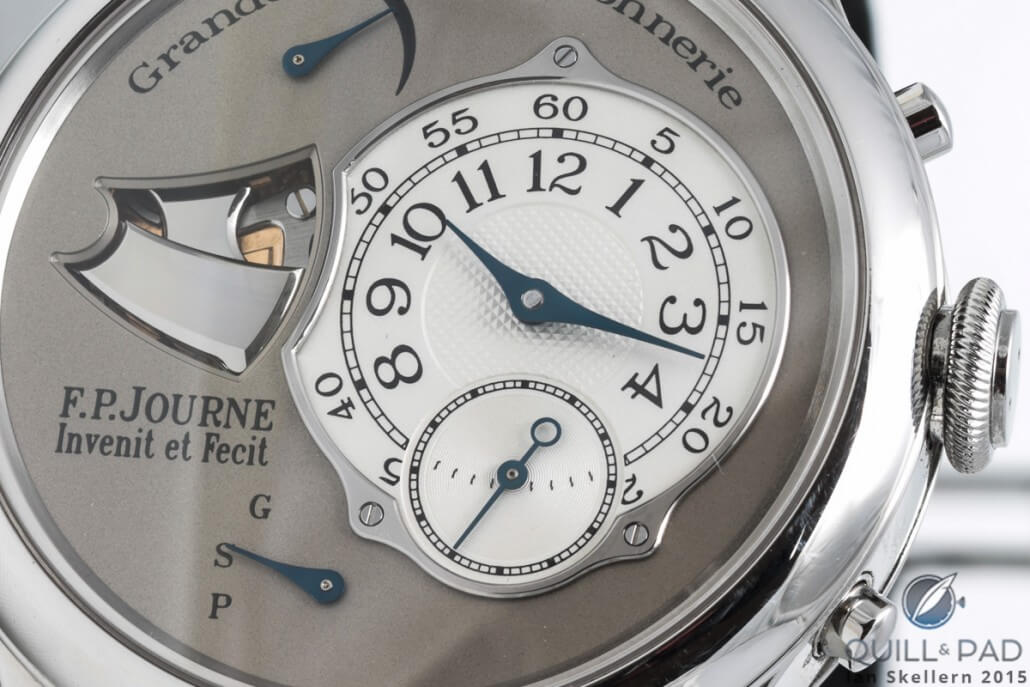
The striking hammers of the F.P. Journe Sonnerie Souveraine can be seen in the opening to the left of the time indication subdial
To put that in perspective, if the chimes are set to silent and the minute repeater not used, then the movement can run for a full five days.
This required a complete reworking of the going train and the strike train to reduce power consumption as much as possible.
The single mainspring also delivers power in a very interesting way: from both ends of the spring, which earned yet another patent.
The time side of the movement is driven by the barrel’s drum, which is fixed to the outside end of the mainspring and rotates in a clockwise direction. This is pretty standard and can be found in every mechanical watch. But the strike train is actually driven by the arbor in the center of the mainspring, rotating a toothed wheel in a counterclockwise direction.
This means the mainspring is unwinding in two directions at once, providing power in each of those directions. That is why the power consumption of the movement was such a big obstacle to overcome; the mainspring being pulled in two directions is doing double duty.
To make sure the wearer won’t run out of power, Journe had to figure out how to display the reserve on a spring unwinding from both ends. The result, not surprisingly, ended in another patent and a set of three differential gears to drive the power reserve indicator.
Impressively, the barrel and arbor traveling in different directions have a set of coaxial meshing gears that meet a third (still coaxial) differential gear, which is what provides the averaged power reserve display. If you see the power indication dipping close to the bottom you can then wind the mainspring.
Seriously, there’s more?
The long stem of a normal winding mechanism was eliminated in favor of a sliding square arbor and permanently meshed crown and transmission wheels. The transmission wheel is also permanently meshed with a set of two pinions for time setting and another intermediate wheel for winding. This is all mounted on a rocker arm that moves when the crown is pulled to engage with the going train and set the time.
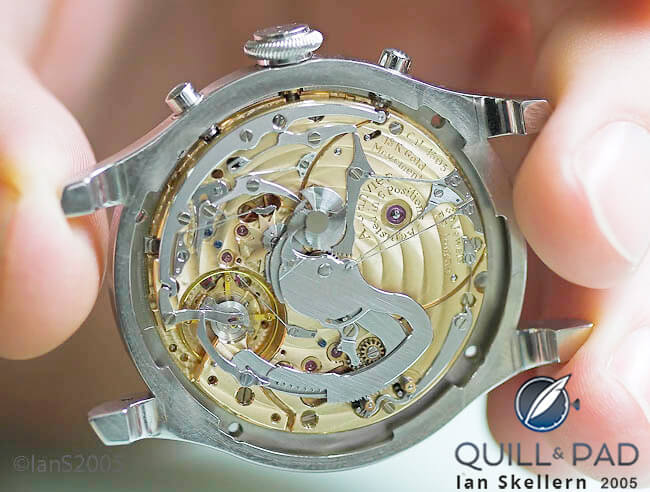
François-Paul Journe holding the nearly completed first prototype of the Sonnerie Souveraine in 2005
To wind the mainspring, the crown is returned to its starting position – which disengages the rocker arm from the going train . . . and the mainspring barrel. Only when torque is applied to the transmission wheel does the rocker arm swing to mesh with the mainspring and wind the watch, disengaging when pressure is released. This feature is important for operation of the numerous blocking systems incorporated into the movement.
All of this incredible movement detail highlights why grande sonneries are remarkable (there really aren’t many in existence, for one); why F.P. Journe is pretty much a genius (tons of patents and inventions over a long career); and how owning a Journe watch instantly sets you apart from the normal WIS.
The rabid appreciation of any Journe watch will mark you as a one-percenter among those who are deep down the horological rabbit hole, and the styling is something so classic and yet ridiculously not. There are watches like that in the industry, but there aren’t watches like a Journe.
Both the watches themselves and the man are living legends, and the Sonnerie Souveraine is the crème de la crème of the Journe universe.
And to answer the question I posed at the beginning regarding what happens when you are alive to see your legend grow . . . well, François-Paul Journe takes it in stride. He continues to make new creations and even cracks a smile or two these days, proving he doesn’t care about the watch fame but instead about the horology, pure and simple. That’s why he is as incredible as his watches: Elvis ain’t got nothing on him!
Let’s break the Souveraine down!
- Wowza Factor * 10 It’s an F.P. Journe, so it has that working for it. But the movement is the real stunner in this watch.
- Late Night Lust Appeal * 111 » 1,088.538 m/s2 It’s a repeated numeral for the repeated striking of the movement and the repeated moments. You can’t help but drool!
- M.G.R. * 72 Yup, that’s a perfect score for the movement. I don’t give that out too often, so you know this movement is as geeky as they come.
- Added-Functionitis * Severe Grand and petite sonnerie, minute repeater, and the ever-so-useful power reserve makes this watch a monster of added functions. You will definitely need emergency prescription-strength Gotta-HAVE-That cream for that melodious swelling!
- Ouch Outline * 13 – Stepping on a Lego in the dark! Most people will know this pain and agree that they would gladly accept this punishment if it meant getting the Sonnerie Souveraine on their wrist. I know I would.
- Mermaid Moment* 15 minutes or 15 seconds, depending on how soon you flip over the watch. If for some odd reason you don’t immediately flip this watch over to scope out the movement, it will still only take at most 15 minutes until the next quarter hour chimes and you understand the love. By the following chime you will already have booked a chapel and reserved two white ponies to ride off into the sunset together. Scratch that, I guess you will just need the one because watches can’t ride horses solo.
- Awesome Total * 35,040 That is the number of times that the Sonnerie Souveraine chimes every year if the watch is left in full grand strike mode. And that is an awesome total all its own.
For more information, please visit www.fpjourne.com/souveraine/sonnerie-souveraine.
Quick Facts: F.P. Journe Sonnerie Souveraine
Case: 42 x 12.25 mm, stainless steel
Movement: manually winding Caliber 1505 with pink gold plates and bridges needing ten patents
Functions: hours, minutes, subsidiary seconds; grand and petite sonnerie, minute repeater, power reserve indicator and chime indicator
Price: 702,000 Swiss francs
* This article was first published on December 13, 2015 at The Sonnerie Souveraine By F.P. Journe: A Legend In Its Own Time.
You may also enjoy:
Behind The Lens: The F.P. Journe Tourbillon Souverain
F.P. Journe Astronomic Souveraine: Reigniting Zest
Book Review: ‘F.P. Journe Invenit et Fecit’ By Jean-Pierre Grosz

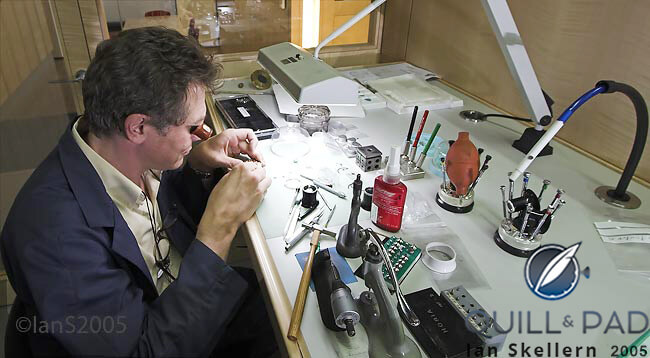
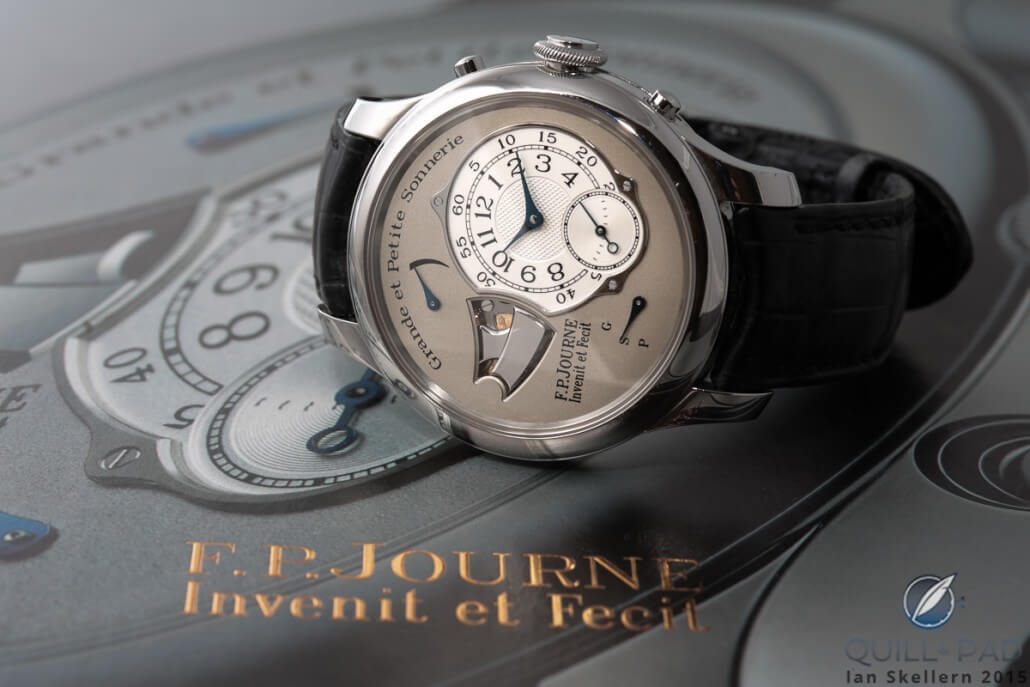
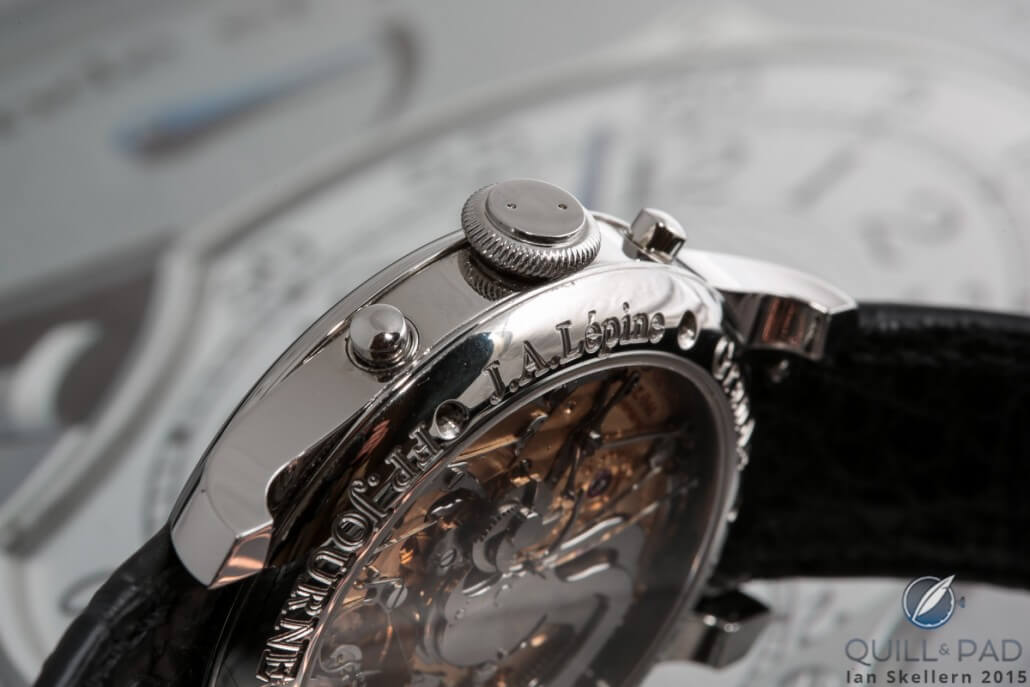
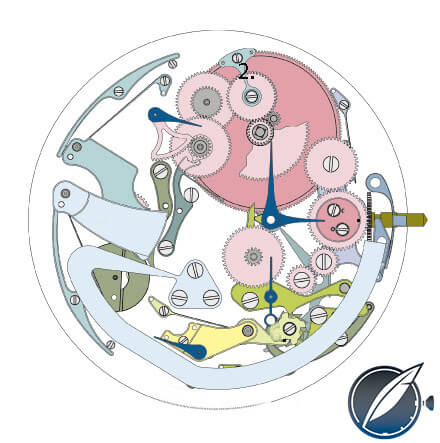
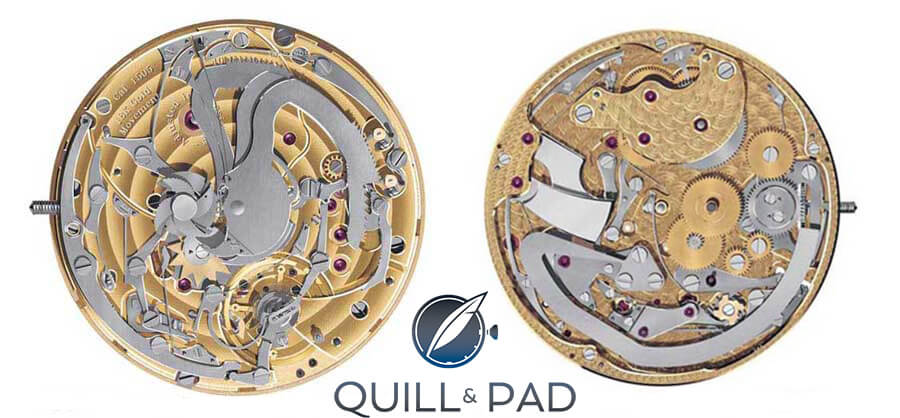
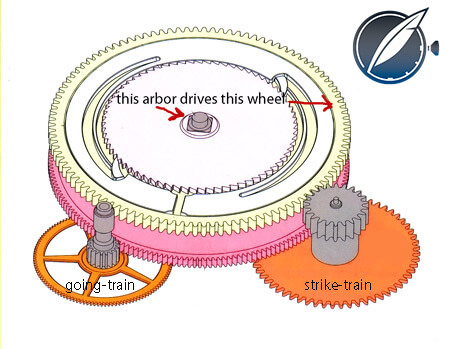
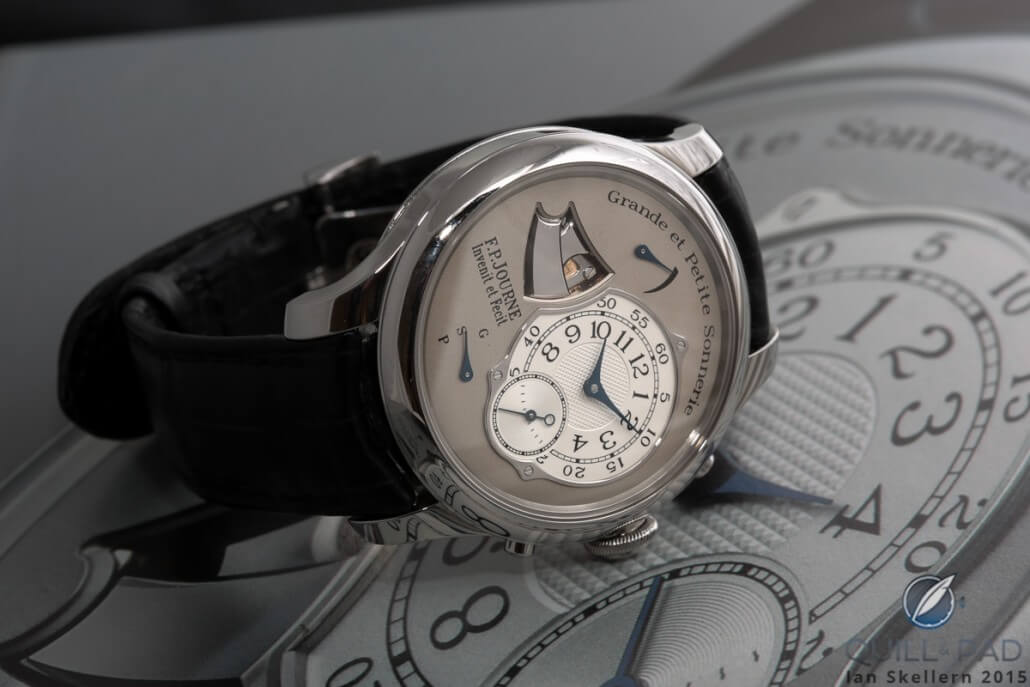
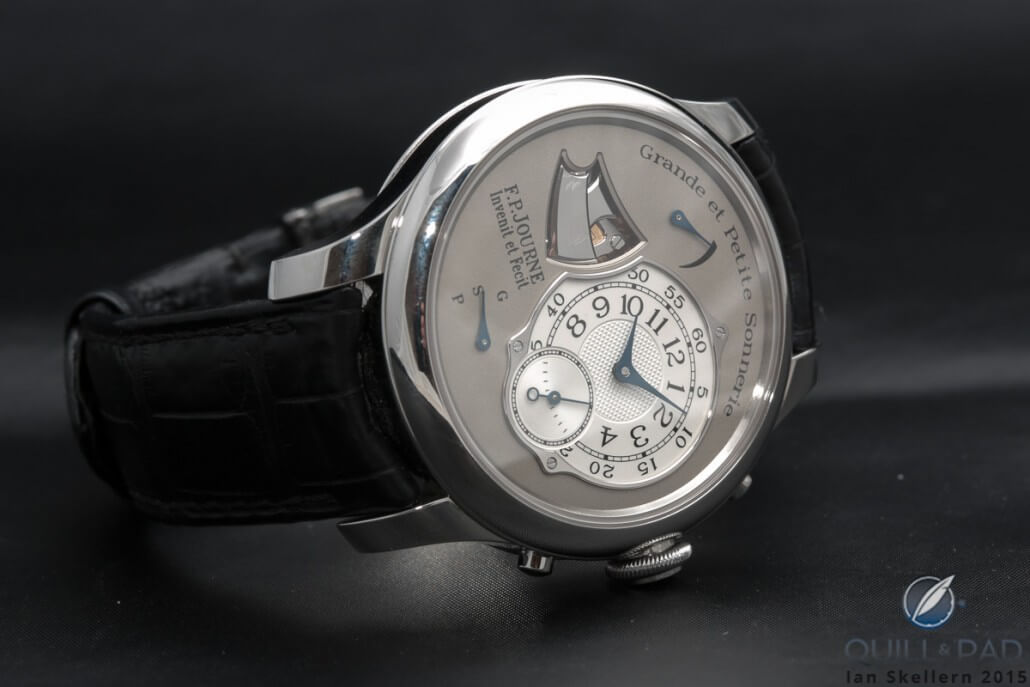
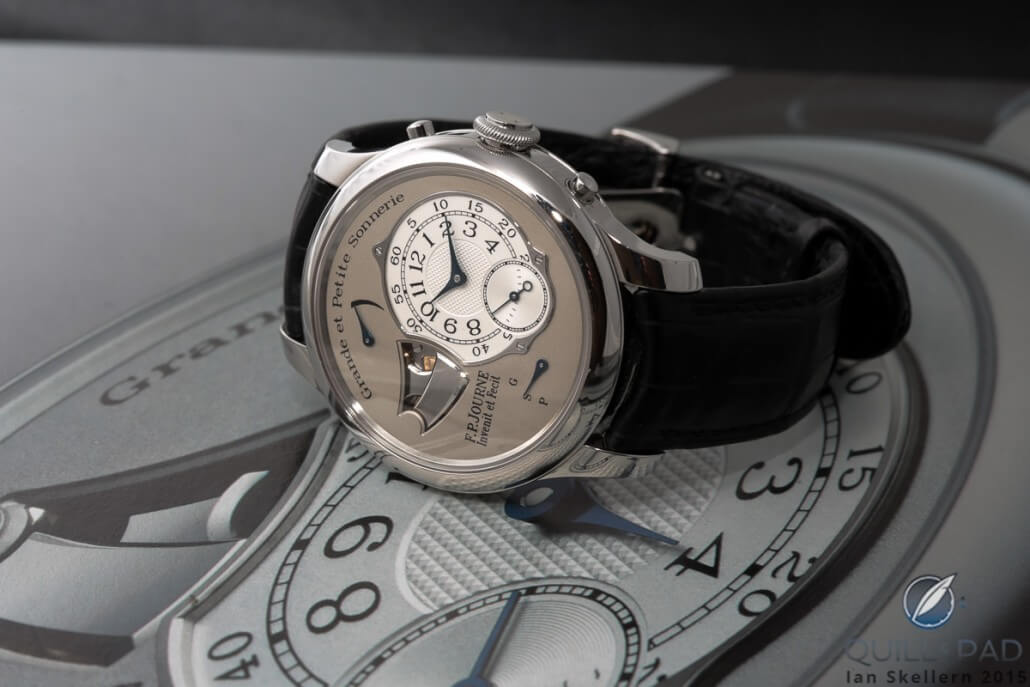


Leave a Reply
Want to join the discussion?Feel free to contribute!